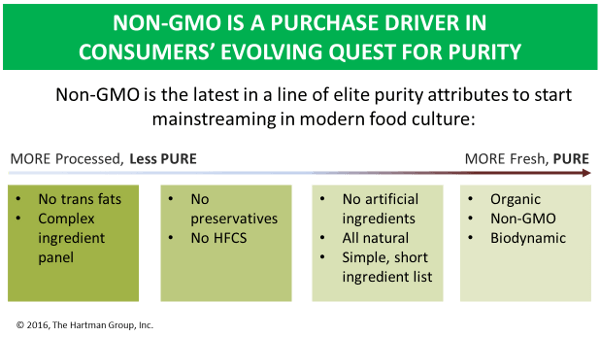The GLP aggregated and excerpted this blog/article to reflect the diversity of news, opinion and analysis.
[Editor’s note: A recent survey by the Hartman Group, a food and beverage industry consulting group, examined consumer concerns about GMOs and transparency in the food industry]Our Transparency 2015 report finds that 64 percent of consumers say that “knowing what ingredients are in a food or beverage” is of top importance to them, and among these consumers 41 percent say they want to know about GMOs.
. . . .
There is not yet a comprehensive and consistent consumer understanding of GMOs:
- Slightly more than half of consumers (52 percent) say they understand what GMOs are.
- Less than a third of consumers (30 percent) say they know which crops are most likely to use GMOs.
- Even fewer consumers (28 percent) say they know which products have GMO ingredients.
- Only 9 percent of consumers understand that certified organic foods are GMO-free.
. . . .
Read full, original post: The GMO Debate: When Perception Deters Purchase, a Little Bit of Transparency Goes a Long Way
































